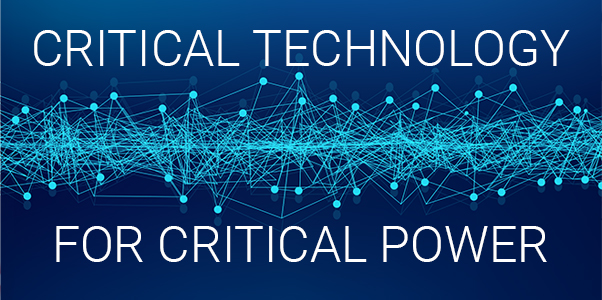
By Gary Balash
WHAT ARE ENGINEERED ALLOYS?
Before a battery grid is even created, a decision must be made on the raw materials. Most battery companies use a lead alloy with a concentration of lead close to 99%. Despite the novel buzz words which fill the market like “Pure Lead” or “Thin Plate Pure Lead (TPPL),” pure lead has been around for a long time. By itself, this chemistry is not particularly beneficial to the end-user, and can potentially result in poor performance and life. In fact, a battery with 100% pure lead can impede charge acceptance through the gradual buildup of a passivation layer, affecting the mass-to-grid interface1,2. What is most beneficial is an engineered blend of lead and other elements (an alloy) to match the battery’s intended service needs.
Based on industry papers, research, and results, optimized performance and long life in high-rate applications occurs with a perfected mixture of superior quality lead with tin and calcium,2, 3, 4 not solely with just pure lead. It is a composition using an engineered alloy formula with high lead purity, specifically tailored to meet the proper high-rate application that improves the mass-to-grid interface’s conductivity.
An enhanced mass-to-grid interface allows for greater adhesion and uniformity of active material contact, optimizing the battery’s power delivery and improving life compared to a strictly pure lead/TPPL battery. This engineered alloy also provides increased corrosion tolerance, conductive performance, manufacturing consistency, and proven performance that a pure lead and TPPL grid solution cannot match.
WHAT IS COMPU-PRESS®?
Compu-Press is a process that produces an optimized battery grid ideal for high-rate applications. The coreof this proven process is rolling metal to enhance its strength beyond its original state. Compu-Press casts a thick, continuous solid sheet of engineered alloyed lead,and rolls it under multiple stages of extreme pressure, and compresses that sheet down to a computer controlled optimally designed thickness. Once compressed, it is ultimately perforated into a highly compacted, robust grid. It is similar to a cold-rolled steel process. In terms of physical characteristics, cold-rolled steels are typically harder and stronger than standard hot-rolled steels. As the metal is shaped at the lower temperatures, the steel’s hardness, resistance against tension breaking, and resistance against deformation is increased5.
The Compu-Press process, in combination with an engineered alloy formula, produces high quality grids, featuring an excellent combination of mechanical properties such as improved tensile strength, shear strength, toughness, and hardness. Compared to pure lead/TPPL, lead alloyed with high tin, and low calcium is over 390% stronger in Ultimate Tensile Strength. This increased strength helps prevent active material shedding.
The Compu-Press process changes the original materials’ morphology into a homogeneous grain structure, solidifying it for high-rate performance rigors. A finished Compu-Press grid creates an elongated grain structure with a visual appearance similar to layers of armor (Fig. 1). The outer layers limit the electrolyte’s path to the grid’s outer surface, protecting the grid’s inner layers and core. Should corrosion affect the outer layer, there are multiple layers of protection still in place.
As with any lead battery, corrosion of the grid by the electrolyte occurs along the grain boundary edges. With its horizontal layers of armor, any pathways for the electrolyte to penetrate the Compu-Press grid grainboundary edges are similar to a labyrinth, making it virtually impassable.
(Figure 1)

– R. DAVID PRENGAMAN
WHAT IS HYDRO-FORMATION?
After the grids are created and pasted with proprietary lead-oxide paste, they become plates. After plates are cured using exacting methods, they are inserted into battery cases, assembled, and are ready for the Hydro-Formation process. As a manufacturing process, the formation step is critical to provide the battery energy for long life and performance. As is common practice, the step of formation involves a very carefully calculated process that takes a prescribed amount of time to form out the battery plates with high amounts of electricity, producing heat as a byproduct.
Hydro-Formation uses a highly technical computer controlled process of chilled water-assisted formation throughout its proprietary process. This process enables a more consistent and efficient formation of the entire battery by controlling its overall temperature throughout the entire process, resulting in significant productivity efficiencies and energy savings.
WHAT IS THE VALUE EQUATION?
These key features and processes are available in a Deka® HRC® (High-Rate Compu-Press) battery, whichoffers peak performance, while leveraging your capital investment. It is another offering in the proven line of Deka products, including the revolutionary Deka Fahrenheit for high heat environments and the Deka High Rate, built to provide superior performance in critical applications. East Penn has produced over 256 million batteries over the last decade utilizing the Compu-Press process. The results have significantly exceeded the company’s performance expectations.
Additionally, all Deka batteries, including the new Deka HRC are virtually 100% sustainable and offer a financial credit when they reach end of life. Compared to alternative technologies such as lithium, Deka batteries provide high reliability and the lowest overall Total Cost of Ownership (TCO).
CHOOSE A COMPANY YOU CAN TRUST
With over 75 years in the industry, and a known history of performance, sustainability, and continued capital investment, East Penn makes batteries that work and consistently perform at the top of industry needs. Incorporating our exclusive and proven Engineered Alloys, Compu-Press, and Hydro Formation technologies into our Reserve Power line gives customers with critical power applications, another reason to demand Deka.
Sources:
Gary Balash is Senior Product Manager of Reserve Power at East Penn Manufacturing Co. He can be reached at [email protected].